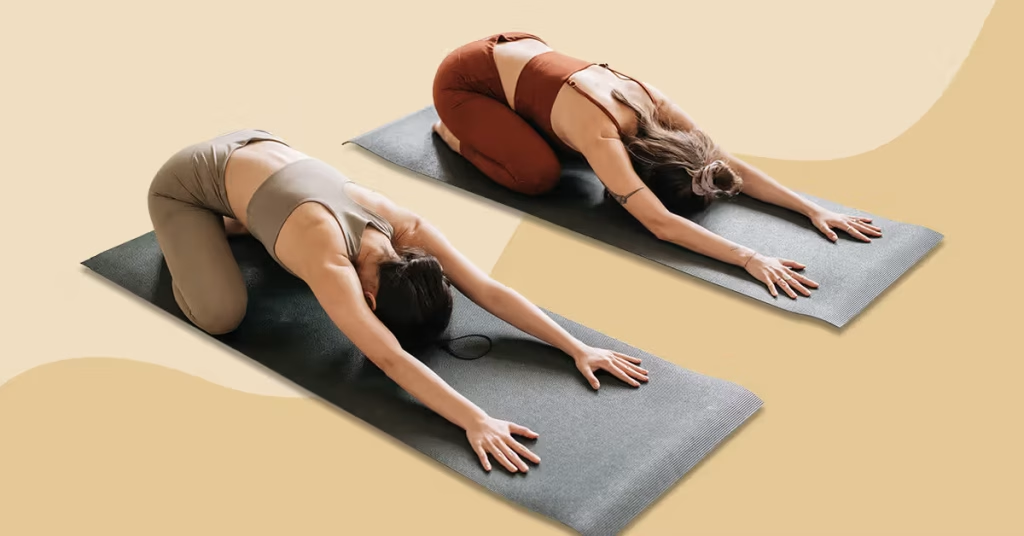Blog
“The Best Yoga Mats for Comfort and Stability”
When it comes to practicing yoga, having the right equipment can make all the difference. A good yoga mat provides the foundation for every pose, offering comfort, stability, and support during your practice. Whether you’re a seasoned yogi or a beginner, choosing a high-quality yoga mat that fits your needs is essential. In this guide, we’ll explore the best yoga mats on the market for comfort and stability to help you enhance your practice.
Key Features to Look for in a Yoga Mat
Before we dive into the top yoga mats, let’s discuss the essential features that make a great mat. The perfect yoga mat should be:
- Thickness and Cushioning: The thickness of the mat affects comfort and joint support. While thicker mats provide more cushioning, they may not be as stable as thinner ones. A thickness of around 4-6 mm is ideal for most practitioners, striking a good balance between comfort and stability.
- Material and Grip: The material of the mat determines its durability, eco-friendliness, and grip. High-quality mats are made from materials like natural rubber, TPE, and PVC. A mat with a non-slip surface ensures that you stay secure during poses, even in sweaty conditions.
- Portability: If you take your yoga practice on the go, look for a mat that is lightweight and easy to roll up for transport.
- Texture and Traction: The texture of the mat can affect its grip and comfort. Textured mats provide better traction, keeping you steady and safe during your practice.
- Eco-Friendliness: For those who prioritize sustainability, choosing an eco-friendly mat made from recycled or natural materials is a wise option.

Top Yoga Mats for Comfort and Stability
1. Liforme Yoga Mat Liforme is often praised for its unparalleled grip and comfort. Made from eco-friendly, non-toxic materials, this mat features a unique, textured surface that enhances stability. The extra cushioning offers support for your joints, making it ideal for both gentle and intense practices.
2. Manduka PRO Yoga Mat The Manduka PRO is known for its durability and support. With a thickness of 6 mm, it provides excellent cushioning, which is perfect for practitioners who need extra joint protection. Its closed-cell material prevents moisture and bacteria buildup, ensuring a clean and hygienic practice.
3. Gaiam Essentials Thick Yoga Mat For those looking for an affordable yet high-quality option, the Gaiam Essentials mat is a top pick. With extra padding for added comfort, it is great for beginners who want a non-slip surface for their practice. This mat offers excellent value without compromising on quality.
4. Liforme Travel Yoga Mat For yogis on the move, the Liforme Travel Yoga Mat is a great choice. It’s lightweight and easy to carry, while still providing great support and grip. The material is eco-friendly, ensuring that you can practice with peace of mind.
5. Aurorae Yoga Mat The Aurorae Yoga Mat offers a blend of comfort and performance at an affordable price. Its eco-friendly, non-toxic material provides excellent cushioning and traction. The mat is also available in a variety of colors and thicknesses, so you can choose one that fits your practice and style.
How to Choose the Right Yoga Mat for You
Choosing the right yoga mat depends on your personal preferences and practice needs. If you prioritize eco-friendliness, look for mats made from natural rubber or recycled materials. For those who practice hot yoga or Bikram, a mat with superior grip and moisture-wicking properties is essential. If joint support is a concern, opt for a thicker mat with ample cushioning.
One of the most important considerations when choosing a yoga mat is thickness. The thickness of a mat impacts how much cushioning it provides, which in turn affects joint support and comfort. For beginners or those who practice more restorative styles like yin or hatha yoga, a thicker mat (6-8 mm) may be preferable, as it provides extra support for the knees, hips, and spine.
However, if you prefer more balance and stability during poses or practice more dynamic styles like ashtanga or power yoga, a thinner mat (4-5 mm) may be a better option. These mats still provide enough cushioning for comfort but maintain the stability needed for balanced postures.
2. Material and Eco-Friendliness
:max_bytes(150000):strip_icc()/Alo-Yoga-Warrior-Mat-Jungle-nick-kova-photo-03-f623d9f4b11d4c2e957830b1b52b6806.jpeg)
The material of a yoga mat is a critical factor, especially if you’re looking for durability and eco-friendliness. Popular materials include:
- PVC: Durable, lightweight, and inexpensive, but not eco-friendly.
- TPE (Thermoplastic Elastomer): Environmentally friendly, non-toxic, and offers good traction.
- Natural Rubber: Provides excellent grip and cushioning but may not be ideal for those with latex allergies.
- Cork and Jute: Sustainable and offer a unique, textured surface that’s great for grip.
For those who prioritize sustainability, look for mats made from recycled or biodegradable materials. These eco-friendly options can provide a more sustainable choice without sacrificing quality or performance.
3. Grip and Traction
A mat with a strong grip ensures you stay secure and stable, even during challenging poses. This is particularly important for hot yoga or sweaty sessions where slipping can be a safety concern. High-quality yoga mats often feature textured surfaces or use materials like natural rubber that naturally provide excellent traction.
Some mats have additional features such as a moisture-wicking surface or a sticky grip layer, which helps maintain a firm hold during sweaty sessions. If you practice hot yoga or prefer a mat that handles moisture well, choose a mat designed with these specific properties in mind.
4. Portability and Weight
Portability is an essential factor if you plan to travel with your mat or take it to the studio. Lighter mats made from materials like TPE or thin PVC are easier to roll up and carry without taking up too much space. Mats designed for travel are often thinner and can be folded or rolled to fit into a compact carrying case.
On the other hand, if you’re mainly practicing at home, weight may not be as significant of a factor. In this case, opting for a heavier mat with thicker cushioning may enhance comfort and support without worrying about portability.
Top Yoga Mats for Different Needs
- For Eco-Conscious Yogis: The Liforme Yoga Mat is known for its sustainability, excellent grip, and durability. Made from eco-friendly, non-toxic materials, it’s an ideal choice for those who want to practice with an environmentally responsible mat.
- For Beginners: The Gaiam Essentials Thick Yoga Mat provides a soft, cushioned surface and is perfect for those just starting out. Its affordability and quality make it a great entry-level option.
- For Advanced Practitioners: The Manduka PRO is popular among experienced yogis for its dense cushioning, support, and long-lasting durability. It’s heavier than most mats but offers excellent stability for dynamic and balance-focused practices.
Conclusion
Selecting the right yoga mat involves considering factors like thickness, material, grip, and portability to suit your personal practice. Whether you prefer a sustainable mat that aligns with eco-friendly values or a durable mat that offers optimal support, choosing the right yoga mat can make a significant difference in your comfort, safety, and overall experience. With the right mat, you’ll feel more confident and supported, allowing you to focus on your practice and achieve your wellness goals.
The right yoga mat can elevate your practice by providing the comfort and stability needed for optimal performance. When choosing a yoga mat, consider factors like thickness, material, grip, and eco-friendliness to find the perfect match for your needs. With any of these top-rated yoga mats, you’ll be well-equipped to enjoy a supportive and comfortable practice, whether at home or in the studio.


